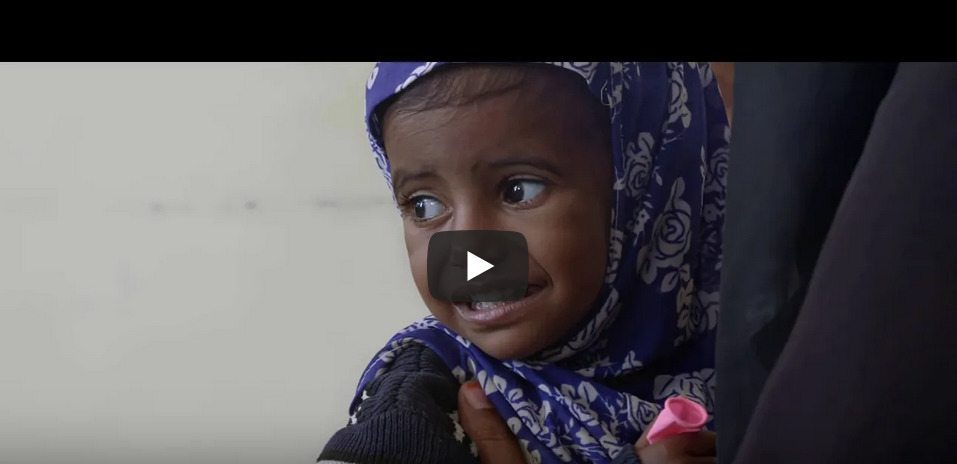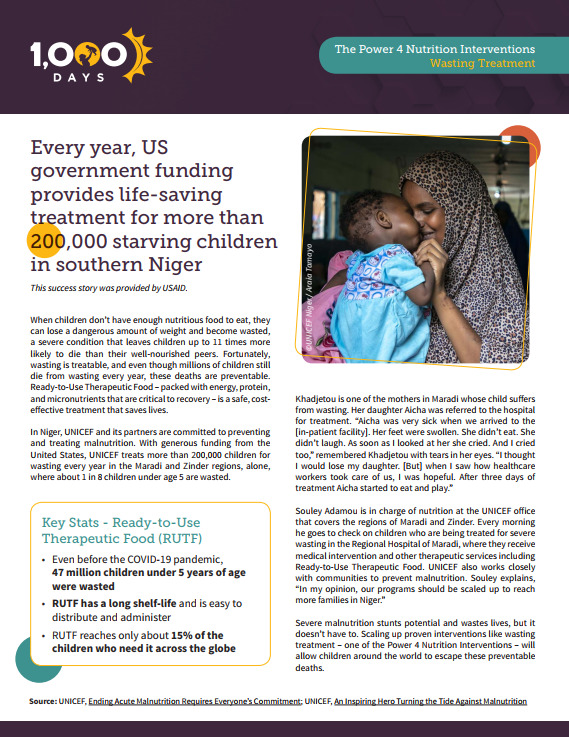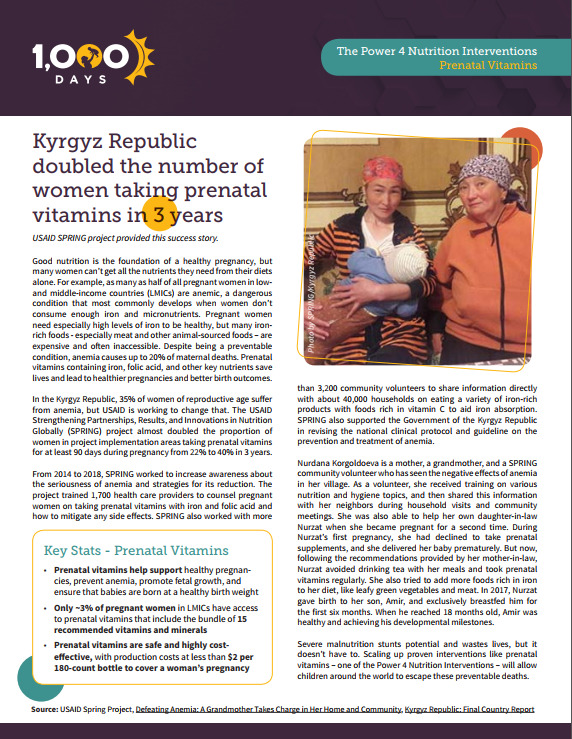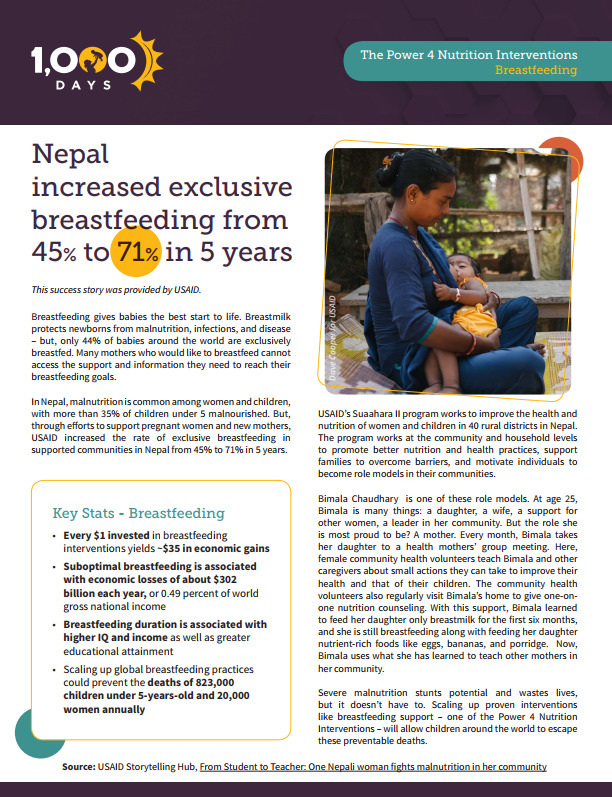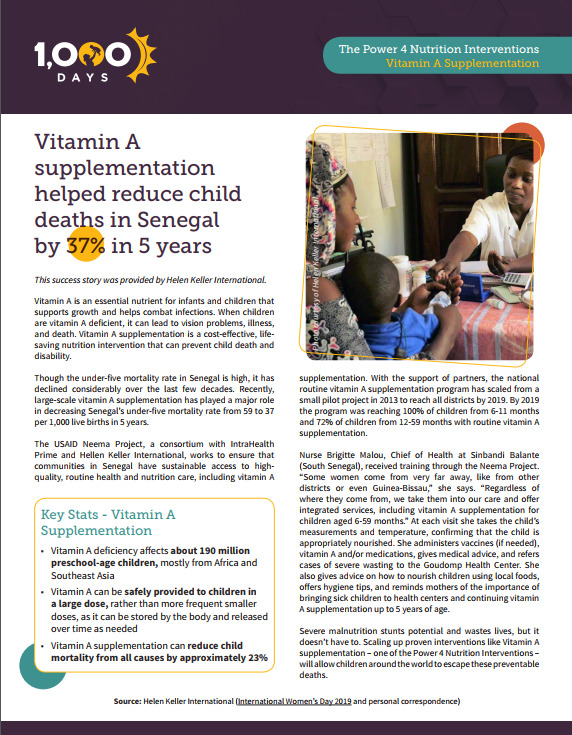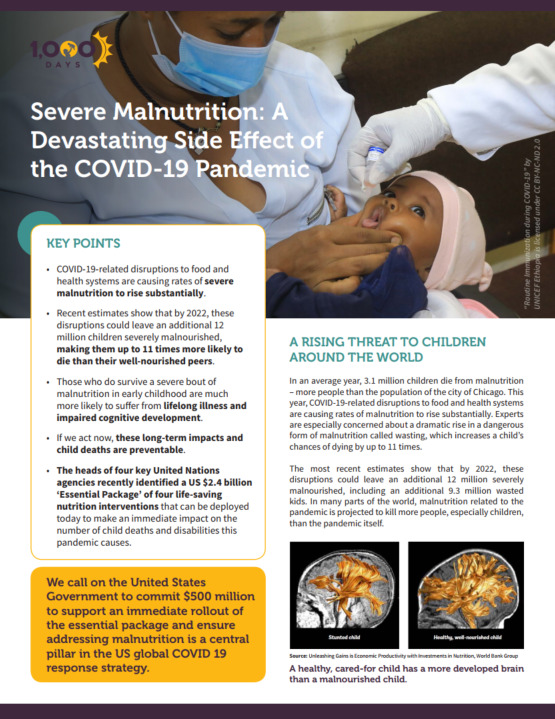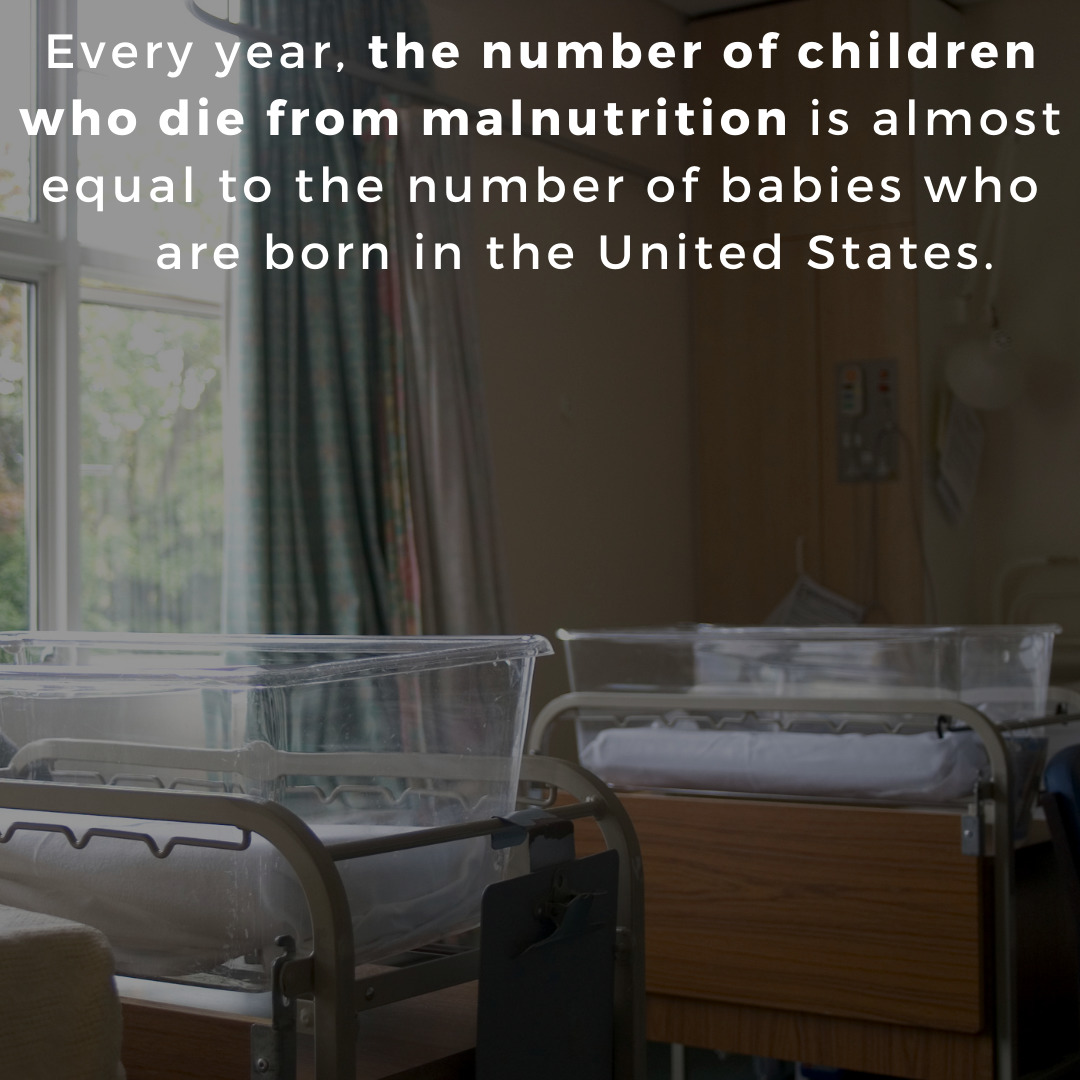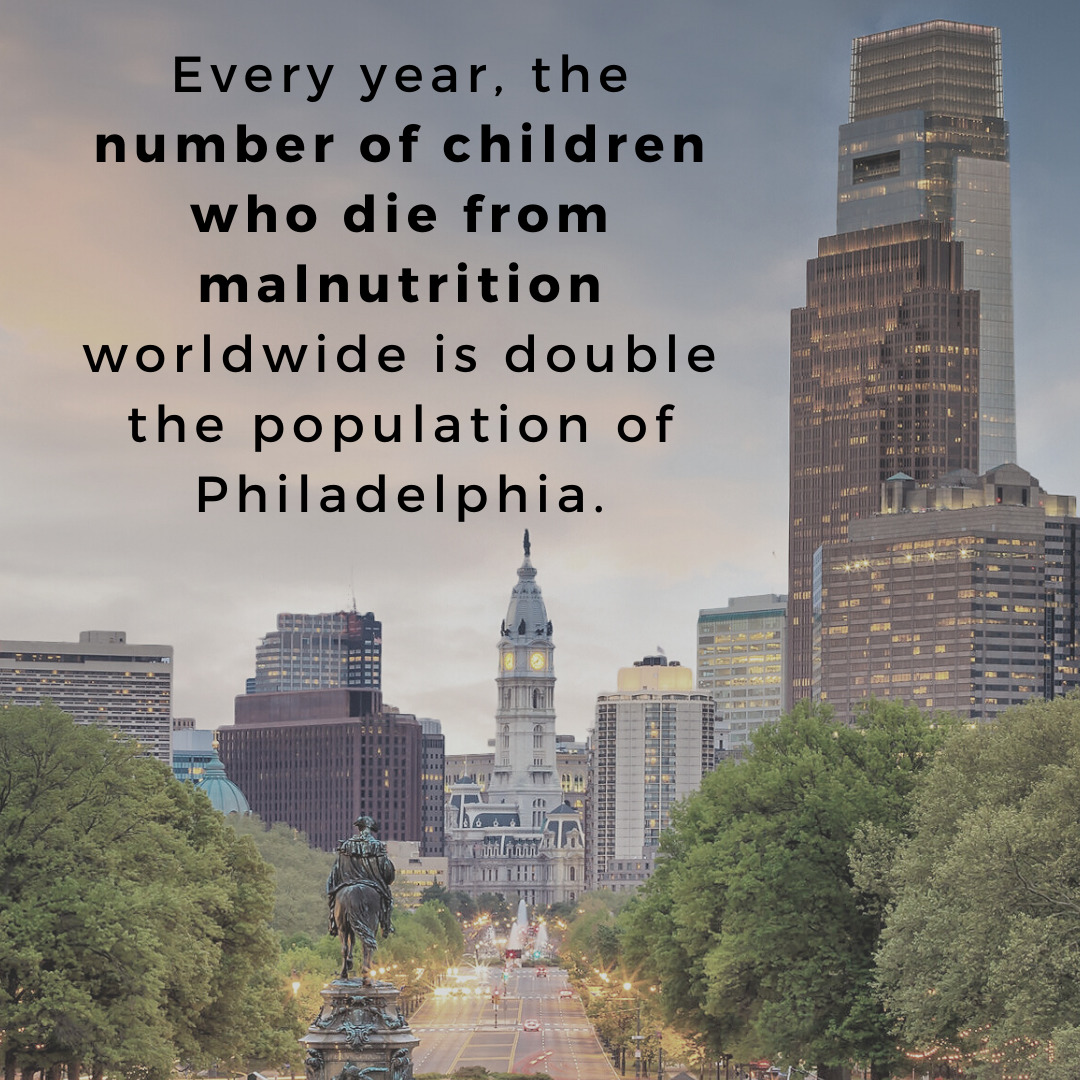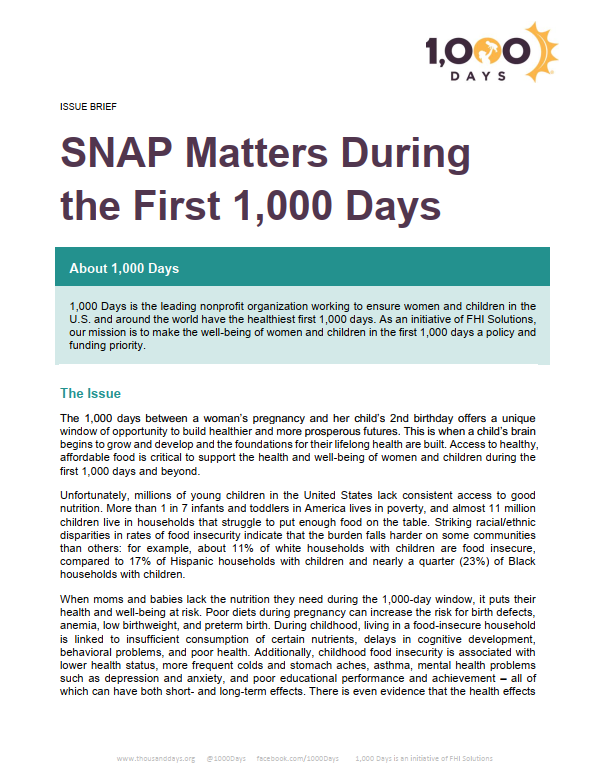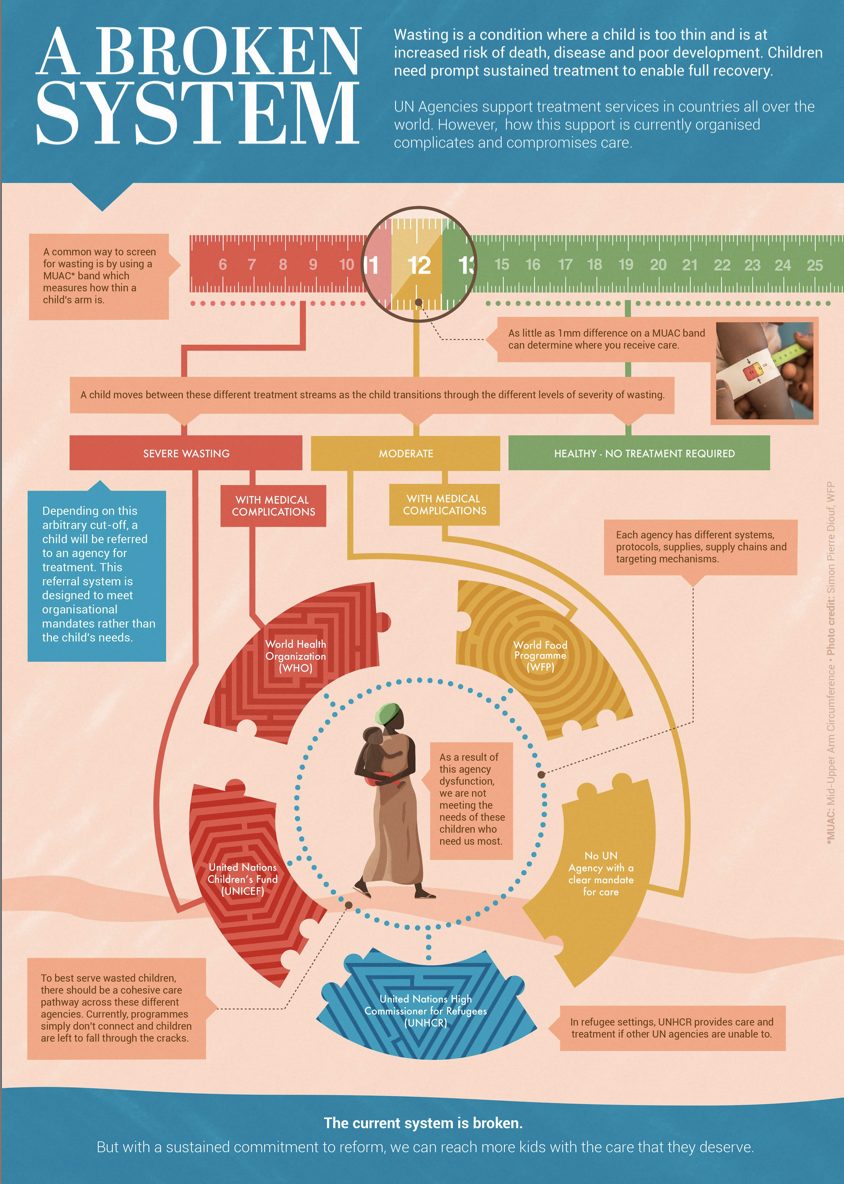The Looming Threat of Malnutrition in the COVID-19 Pandemic (Recording)
A recording of the virtual event The Looming Threat of Malnutrition in the COVID-19 Pandemic hosted by 1,000 Days, Bread for the World and InterAction.
Speakers included:
(Moderator) Jenny Marron, Director for Public Policy and Government Relations, InterAction
Congressman Jim McGovern
Skye Fitzgerald, Emmy and Oscar nominated documentary filmmaker
Karin Lapping, Nutrition Technical Director at FHI Solutions
Asma Lateef, Director at Bread for the World Institute
Shawn K Baker, Chief Nutritionist at USAID

